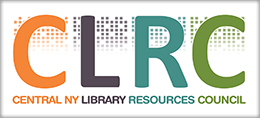Catalyst Grant Final Report
“STEM Camp: Chemistry of Water in Brewerton”
Please provide a brief narrative explaining your project and its outcomes.
 Over the 2-day STEM camp students ranging between 3rd and 8th grades worked with community leaders in STEM fields to understand the chemistry of water, create experiments, learn about the importance of wetlands and understand the processes behind cleaning, caring for and maintaining our valuable local fresh water sources.
Over the 2-day STEM camp students ranging between 3rd and 8th grades worked with community leaders in STEM fields to understand the chemistry of water, create experiments, learn about the importance of wetlands and understand the processes behind cleaning, caring for and maintaining our valuable local fresh water sources.
Day one consisted of students participating in experiments with Dr. Svelta Tordorova from Syracuse University on heat transfer through water. In the afternoon, the students worked with Monica Caves from Upstate Freshwater Institute on a water table and virtual tour of Onondaga Lake. A middle school educator from the East Syracuse Minoa School District, Sue Sobon, provided context for all of the activities on day one. On day two, the students went on two field trips, using a North Syracuse School District bus and driver (thanks Miss Gina!) for transportation. Students were able to see the Onondaga Lake Restoration Center and learn about the cleanup of Onondaga lake from Sue Potrikus as well as projects to continue to clean and maintain the valuable water site. In the afternoon students toured the Brewerton Water Pollution Control Plant and learned about powerful smells and how microorganisms and oxygen are used to clean water. Tours were provided by Steve and David Wede.
Results of this camp include student interaction with community partners as well as an immediate increase in library usage by both students in the camp program and their families. All participants were engaged with the experiments and information shared by our expert presenters.
One of the largest obstacles of to overcome was transportation students to off site events. Communication with the transportation departments of both Central Square and North Syracuse School District allowed us to manage safe transportation to both sites on day two that kept the project in-budget.
What is the most remarkable accomplishment or finding of your project?
The most remarkable accomplishment of the STEM Camp was the variety and diversity of the students interested in STEM education. The program was intensive, running from 9:30am to 4:00pm for two days and the participants maintained a high level of interest for both days, only loosing one student from day one to day two. Students had a high level of engagement through both days, especially when having hands-on activities.
How did your project differ from what you originally proposed?
The age group of interested students varied slightly that our original proposal, The camp was originally geared toward high middle grade students (5th to 9th grade) Based on interest and attendance, we found that the students who actually participated in this type of program were lower middle school with 12 out of the 20 total participants coming from 4th and 5th grade.
Please provide a brief summary of your evaluation activities and/or results, if available.
The survey included one set of paired questions about change in engagement before and after the Camp. The average score (out of 5) for interest in science topics before the Camp was: 3.7. After the Camp, attendees reported a 0.4 average increase in interest in learning more about science topics.
As far as quantitative evaluation of the activities, participants were asked to rate their interest in the STEM kits (day one activities), local speakers, and tours. The day one hands-on activities were most interesting to the kids (4.6 average rating) followed by the tour (4.1 average rating) and finally the local speakers (3.7 average rating). All average ratings were above the median which we believe indicates that the content was well-designed for the largest age groups in attendance.
The next set of survey questions covered the participants’ interests going forward: we asked about if the kids would be interested in exploring schooling or a job at the speaker’s workplace, and at the local facility they toured. We also asked if they were interested in pursuing schooling for a more general job in chemistry. The participants indicated they were least likely in working at the Brewerton Water Pollution Control Plant (2.8 average rating), then pursuing a career at SU or the Upstate Freshwater Institute (3.1), and participants indicated they were most interested in pursuing more schooling in chemistry (3.4).
Finally, we asked if the participants would be interested in pursuing school for and a career at Micron, which uses complex chemistry to do their work. 9 participants responded that they would (one was a maybe). All participants indicated that they are interested in participating in future STEM-themed programs at NOPL Brewerton.
We think these indicators show that the camp was a success, from an increase in interest in science, to above-median scores for interest in the presentations and tours. We are especially pleased that all survey respondents would like to return for more STEM programs at the library!
Anything else you’d like us to know?
Post program, staff have taken some wonderful feedback from parents and students of the camp saying how memorable and engaging this program was. There have been requests to do similar programs during every school break! Thank you CLRC for helping to create a great break for our students!
Sara Alfaro
Youth Services Librarian, NOPL Brewerton
Are you interested in applying for a Catalyst Grant? Check out the grant page for the rules & requirements!
